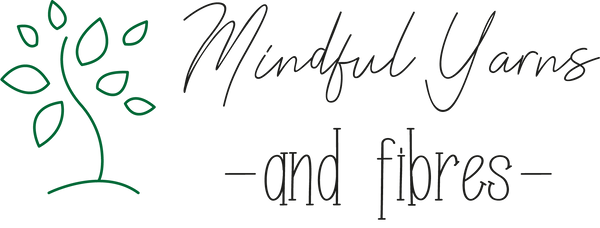The Natural Dye Material
There are so many plants and insects found in nature that create beautiful colour, it is hard to choose what to use! Here are some of the natural dye material that we use to create our colour. Some are found here in Ontario. Others grow further from home and we purchase them from suppliers in Canada.
We love being able to see where the colour that we put on our organic and local wool comes from. Nature is truly amazing!
Dye Material
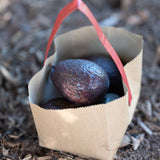 |
Avocado - colour can come from the skins and the pits of this fruit. It can yield tan to pink shades. |
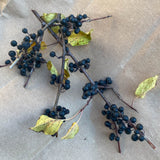 |
Buckthorn - both the berries and bark of this plant can be used to create dye. This is an invasive species in Ontario. The berries can be harvested when unripe in the early summer, or when ripe in the fall. |
 |
Chestnut - the natural dye material comes from the bark and heartwood of the chestnut tree. The dye yields colours of soft to medium yellow and beige to brown. |
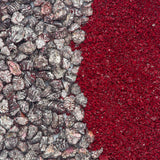 |
Cochineal - this dye comes from insects that attach to the prickly pear cactus, found mainly in tropical and subtropical climates in the Americas. Peru is the largest producer of this dye. In Canada, it is available in bug or extract form and is not harvested locally. It can make pink or red, depending on the PH of the dye bath. |
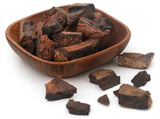 |
Cutch - this dye comes from the heartwood of the Acacia catechu tree, and provides orange to brown colours. The tree is found in India, the East Indies and Southeast Asia. |
 |
Fustic - this dye comes from the heartwood of maclura tinctoria, a tree in the mulberry family. These trees are found in South and Central America and the West Indies. The dye gives a strong clear yellow, and can also produce gold to orange colours. It has high light and washfastness. |
 |
Goldenrod - this grows in abundance on roadsides and in public areas in Ontario in August and September. It can produce vibrant yellows. |
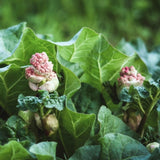 |
Himalayan rhubarb - this natural dye material comes from the roots of rhubarb plants grown in the Himalayan mountains. It yields lovely yellows to oranges |
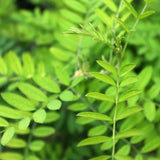 |
Indigo - this is truly a unique dye. It comes from the leaves of Indigofera tinctoria and Indigofera suffruticosa. Unlike most natural dyes, a vat is used, and can be kept going for multiple dyeing sessions. We typically use bananas to provide the sugar to feed the indigo, but there are many different kinds of vats that can be created. The colour is layered, so that more dips in the vat create darker colours. It can be used in combination with other dyes to create complex colours. |
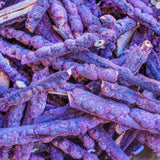 |
Lac - this dye comes from scale insects that invade host trees and secrete a resin that is used to make shellac. The dye is extracted from the resin. This dye has high lightfastness and washfastness. |
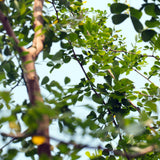 |
Logwood - this dye comes from a tropical tree, Haematoxylum campechianum. It can make beautiful purples and greys. It is native to southern Mexico, and was introduced to the Caribbean, Central America, and other places that could sustain it. The dye has been used since the 16th century. It has good washfastness but moderate lightfastness. |

|
Madder - this dye can be traced back as far as 3,000 BCE. It is one of the oldest known dyes, and gives shades of pink, red, purple, and brown, depending on the dyeing process. Typically the madder root is used, although plant tops may also be used. |
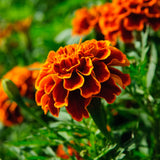 |
Marigold - this well-known garden flower produces bright yellows. It has moderate light and washfastness. |
 |
Mint - there is so much mint growing in the back garden! Rather than continuing to trying to contain it, I've given in, and harvest it to make pretty yarn. This shows best with an iron after-bath to bring out the green |
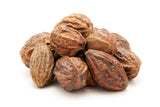 |
Myrobalan - this dye comes from the nuts of the Terminalia chebula tree, that grows in Nepal, India, Sri Lanka, Burma, Thailand and South China. It produces soft yellows that also overdyes beautifully with indigo. |
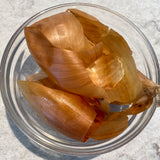 |
Onion skin - easily found from kitchen scraps, onion skins can provide bright yellow and orange shades. The yellow onions and red onions produce different colours. |
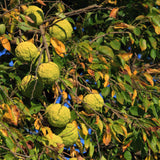 |
Osage orange - this tree grows in North America. The dye comes from the heartwood of the tree. It produces a yellow dye. |
 |
Pomegranate - the rind of this fruit produces a muted yellow dye. It has excellent lightfastness and washfastness, and is sometimes mixed with other colours to improve their stability. |
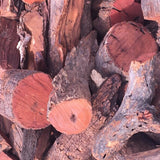 |
Quebracho - this extremely hard evergreen tree grows in South America and is high in tannins. The dye can produce corals and golden-brown or red-brown colours. |
 |
Sappanwood (Eastern Brazilwood) - this natural dye material comes from the heartwood of the Caesalpina sappan, found in Malaysia and India. It gives a rich red colour. This was used commercially as a dye from the late Middle Ages to the early 20th century when synthetic dyes became available. |
 |
Sequoia - this dye comes from the seed collection and reforestation programs for the Californian Coastal Redwoods. The dye creates purple-brown colours that are moderately lightfast. |
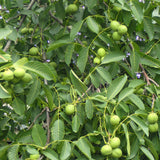 |
Walnut - the outer husks from walnuts contain lots of deep brown colour. These can be found locally in Ontario. |
 |
Weld - this is one of the oldest yellow dye plants. It grows in temperate regions and produces a strong clear yellow. |
Subscribe to our emails
Subscribe to our mailing list for insider news, product launches, and more.
